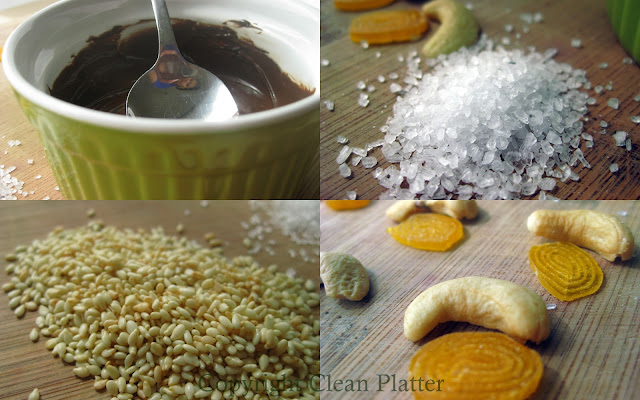When life gives you lemons, you make lemonade. So what do you do when life gives you
leftover ice-cream toppings from a sundae party? Why, you make mendiants, of course!
Perhaps I should explain.
This past weekend, we hosted our annual neighborhood
ice-cream party in our garden. The
neighbors came. We lingered over music
and ice-cream sundaes and root-beer floats (that all-American thing that I
still can’t stomach, but that’s a story for a different day). But when all was said and done, we were still
left with several cartons of ice-cream and tons and tons of toppings. The ice-cream part was easy to dispatch – a small
celebration at work to congratulate one of my colleagues took care of most of
it. But I was still left with a whole
load of toppings including mini chocolate chips, dried coconut, salted
pistachios, roasted cashews, and other yummy treats.
So, as I was taking stock of all the leftovers, it occurred
to me that this would be a perfect time to make mendiants – something I’ve been wanting
to do since Christmas, last year. As I
was also in the midst of planning a weekend getaway, I figured these would be a
nice treat to bring along to share.
Mendiants are simply little disks of chocolate that are
studded with a variety of nuts and dried fruits and allowed to set. They are usually made by chocolatiers as a
way to quickly fashion something out of leftover tempered chocolate. Apparently, the name mendiant comes from the
word mendicant, which would explain why my spellcheck infuriatingly
keeps correcting my typing as I write this post. Traditionally, mendiants showcased four different kinds of toppings representing the four different Roman Catholic
monastic orders. Inspired by the robes of the four orders, mendiants featured raisins for the Dominicans, hazelnuts
for the Augustinians, dried figs for the Franciscans, and almonds for the Carmelites. A quick search through Google did not satisfy
me that the colors of the fruits and nuts really correspond to the robe colors
of each of these orders, but then again, mendiants were invented far before
the days of Google, so I guess I should not question it too much.
Anyhow, to get back to the kitchen, I decided to melt down
the remainder of my chocolate chips and top them with various things to make my
first batch of mendiants. To make mendiants, it’s important to have a properly tempered chocolate. One of my favorite websites, Cooking forEngineers, does a great job at explaining what tempering is and why it’s
important. But the Cliff’s Notes version
is that properly tempered chocolate is essential for that unparalleled snap you
hear when you bite into a quality piece of chocolate. Now, if you go and read through the CforE
site, you will see that there are many different ways to temper chocolate. My preferred method for small scale
applications like this recipe is the microwave method. Essentially, this involves placing chocolate
chips in a microwave-safe bowl, and heating at 30 second intervals and stirring in-between until about 80% of the chocolate is melted. Follow this up with vigorous mixing of the
chocolate until the unmelted chocolate melts into the already melted
chocolate. You can read all about the
cool science behind this at the CforE site – this post is already too long, as
it is. I love dark chocolate, so this is
pretty much the only kind I buy, but you can really make this with any kind of chocolate
that you prefer.
Once you have your tempered chocolate, you are limited only
by your imagination in making mendiants.
On the first batch, I went conventional with pistachios, dried coconut,
golden raisins, and cashews. But soon
after, I was inspired to take it up a notch and made my second batch with dried
mango, roasted cashews, toasted sesame, and a liberal pinch of sea-salt. Both batches were delicious, and I can
already see endless possibilities for future recipes.
On that note, I would love to hear about the
imaginative things you decide to put on your mendiants, but I only have one
request – please, no BACON!
Mendiants
Tempered chocolate
Toppings – a variety of dried fruits and nuts
Suggestions:
Pistachios
Cashews
Dried
coconut
Raisins
Sea salt
Toasted
sesame
Dried figs
or mangos
A pinch of
paprika
Layer a baking sheet with wax paper
Spoon tempered chocolate into 1-inch diameter disks
Before chocolate hardens, place toppings decoratively on top
Allow to set at room temperature or in the fridge
Store refrigerated up to 3 weeks in an airtight container

















